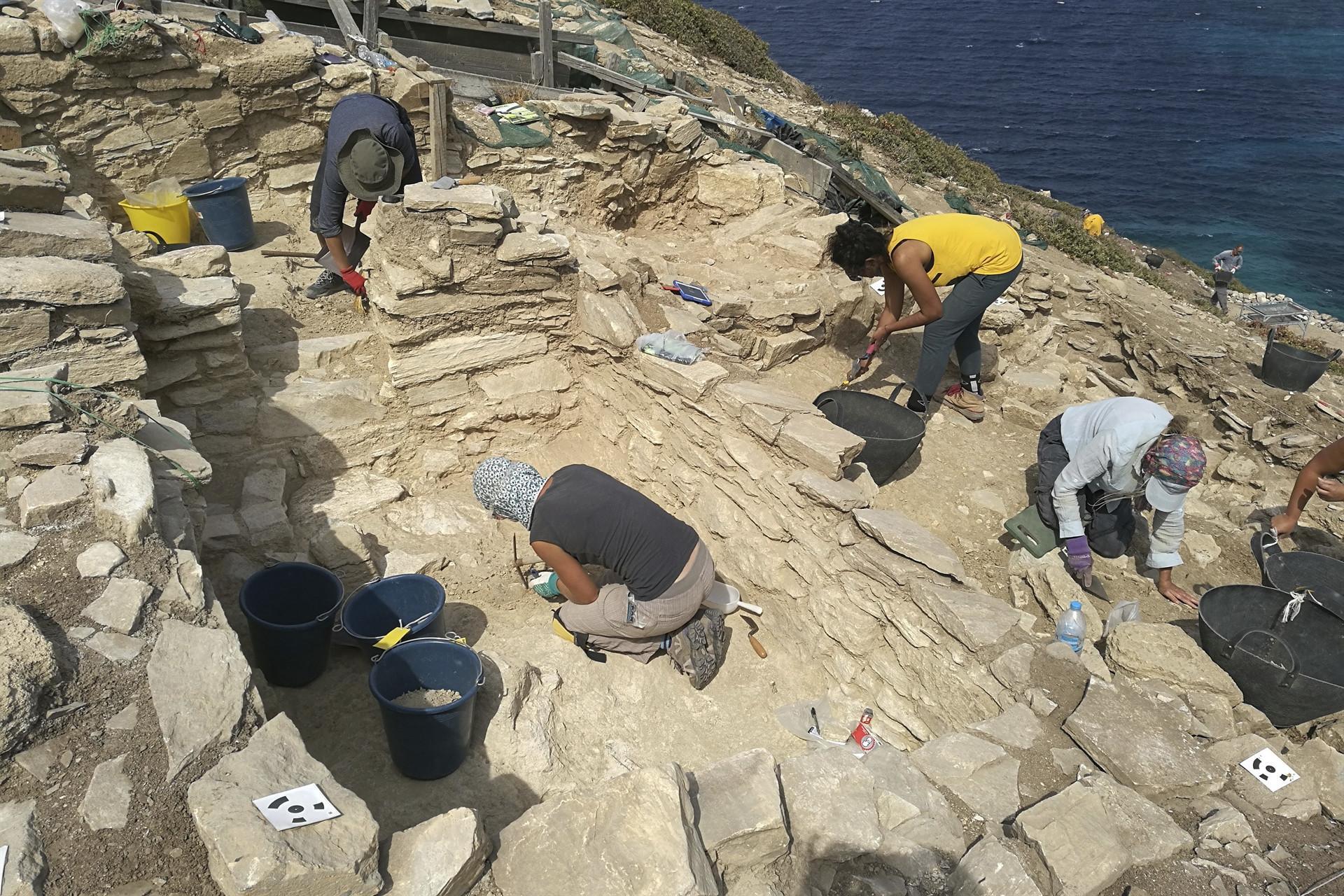
Excavations next to the uninhabited Greek islet of Keros, already identified as the enigmatic hub of a forgotten religion, have now revealed traces of intense industrial activity more than 4,500 years ago, Greece's Culture Ministry said Jan. 24.
Digs last summer showed that Dhaskalio, a rocky islet once joined to Keros, was once almost completely covered in unique monumental structures of gleaming white marble. It also had metal-working facilities and houses, with a sophisticated drainage system underneath.
According to a ministry statement, Keros, between the bigger islands of Naxos and Amorgos, was one of the most impressive sites on the Aegean Sea in 3000-2000 B.C. - the dawn of Greek civilization.
The ministry said prehistoric builders created massive terrace walls that made the 1.3-hectare Dhaskalio look like a stepped pyramid.
"Almost every possible space on (Dhaskalio) was built on, giving the impression of a single large monument jutting out of the sea," the statement said, adding that the complex is the largest known at the time in the Cyclades island complex, which includes the top tourist destinations of Mykonos and Santorini.
More than 1,000 tons of marble were painstakingly shipped over from Naxos for the work.
Project co-director Michael Boyd of Cambridge University said that Dhaskalio appears to have been more than just an ordinary settlement.
"It seems to us that it is a central place to which people are drawn, to which expertise and resources are being brought and where activities like the metalworking ... are being centralized and controlled," he said.
The joint British, Greek and Cypriot team found two metal-working workshops last summer on Dhaskalio, containing smelting debris and a stone mold for copper daggers - using ore imported from other islands.
Keros and Dhaskalio were inhabited between 2750-2300 B.C. The Cyclades were then home to a remarkable civilization of farmers, metalworkers and seafaring traders, best known for the stylized, flat-headed figurines made of white marble that inspired 20th-century artists such as Pablo Picasso and Henry Moore.
Oddly, more than half the surviving Cycladic figurines have been found on desolate Keros. Excavators think they were brought from across the archipelago and ritually smashed on the islet, home at the time to about half a dozen tiny settlements, at a sanctuary just opposite Dhaskalio.
That would make Keros the Aegean's earliest regional religious center, a precursor to nearby Delos that was later revered as the birthplace of Apollo, ancient Greek god of music and light.
Boyd said that while there's no answer to why Keros was initially chosen, the rituals were the first draw that brought everything else.
"All these other activities that we're talking about now (came) to be as important or eventually more important than the ritual activities," he said, adding that in early societies where only a few controlled the knowledge of metalworking, to others it would seem an almost supernatural skill.
"It involves fire, extreme heat, danger, and toxic fumes," he said. "It would have been quite a spectacle for people to watch so it does probably make sense that some of the smelting processes that we see on Keros were part of the ... public events that took place there."